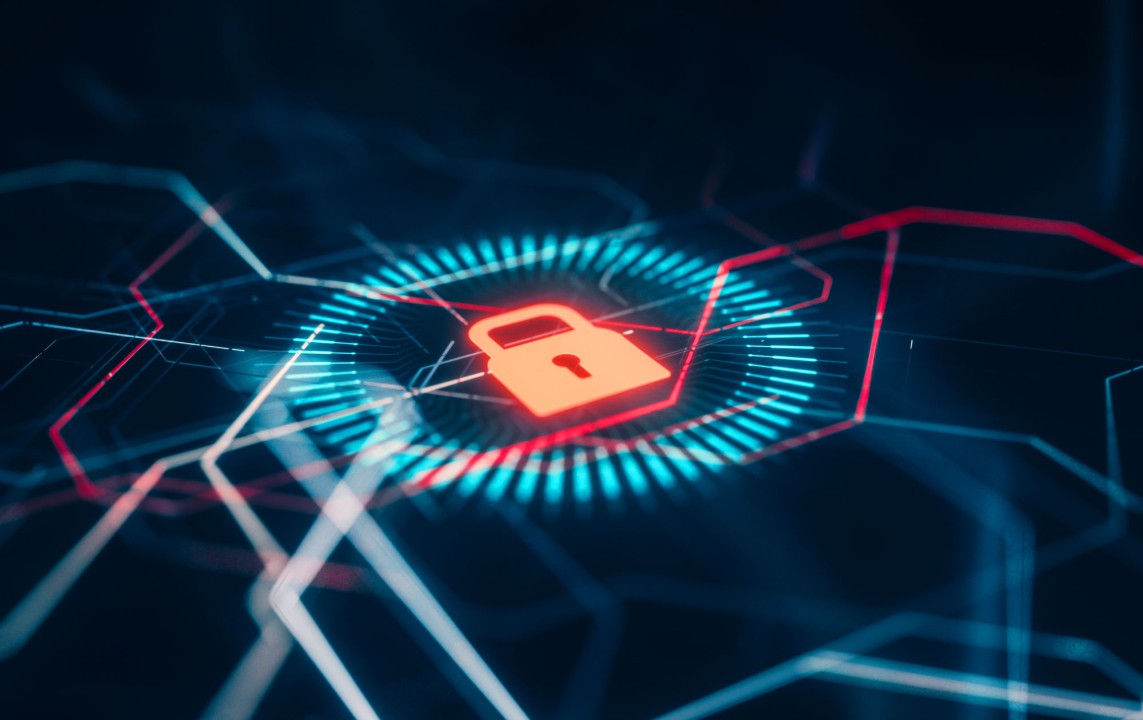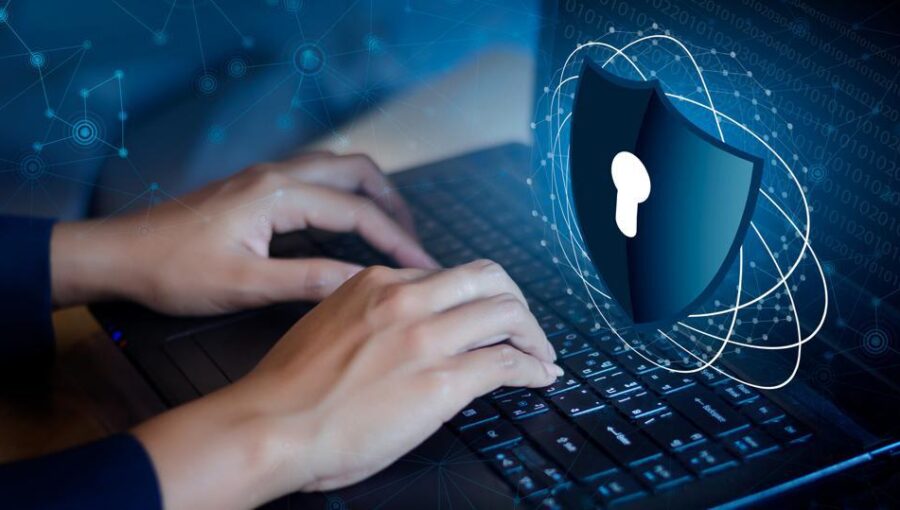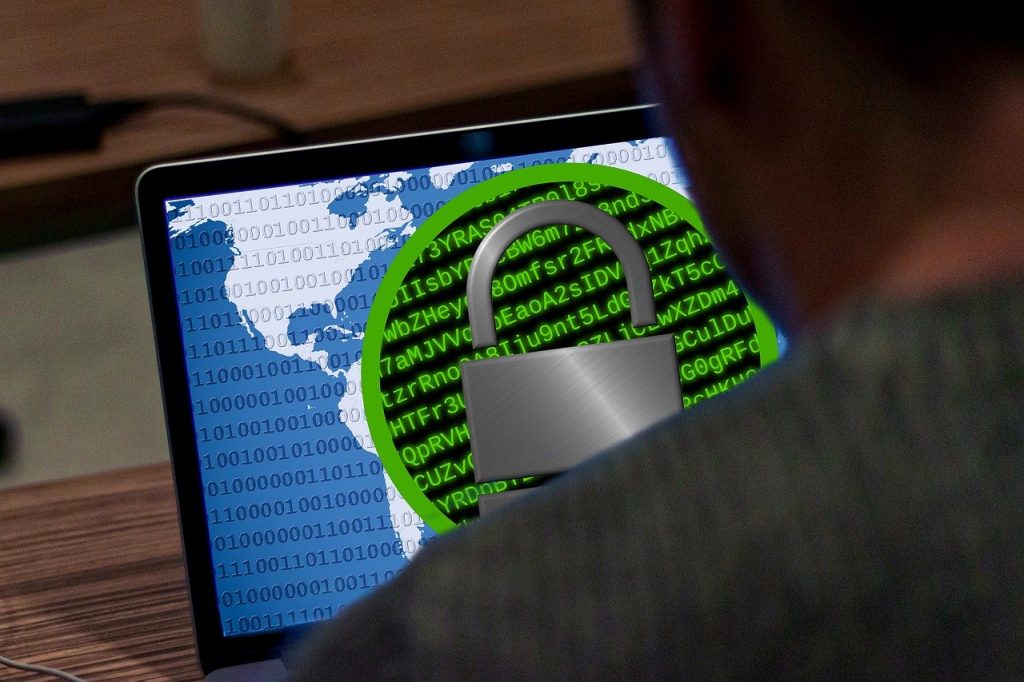
Biometric Authentication: Balancing Convenience And Security
Biometric authentication is a sophisticated security measure that utilizes unique physical or behavioural characteristics to verify the identity of an individual. It replaces traditional methods like passwords or PINs with a person’s biological or behavioural traits. Biometric data can include fingerprints, facial features, iris patterns, voiceprints, or even the way a person types or walks. These unique attributes are captured and stored securely in a database.
When authentication is required, the individual provides their biometric data, which is compared with the stored template for verification. Biometric authentication offers enhanced security as it is challenging to replicate or fake these individual traits, making it a reliable and efficient means of identity verification in various sectors, including finance, healthcare, and government.
Why Do We Need Biometric Authentication?
Biometric authentication has gained widespread adoption across various industries due to its unique ability to enhance security and convenience. Let us explore the reasons why biometric authentication is necessary in today’s digital landscape.
Enhanced Security:
Biometric authentication offers a higher level of security compared to traditional authentication methods. Biometric traits are unique to individuals, making it extremely hard for unauthorized users to gain access. Factors such as fingerprint patterns, iris structures, or voiceprints are nearly impossible to replicate, reducing the risk of identity theft or unauthorized access.
Elimination of Password Vulnerabilities:
Passwords are prone to security risks such as weak passwords, password reuse, or unauthorized access due to hacking. Biometric authentication eliminates these vulnerabilities by relying on physical or behavioural traits that are inherent to individuals, making it a reliable alternative to passwords.
Non-Repudiation:
Biometric authentication provides a higher degree of non-repudiation. Since biometric traits are specific to an individual, it becomes challenging for them to deny their involvement in a transaction or an action that was authenticated using their biometric data.
Increased User Convenience:
Biometric authentication offers a seamless and user-friendly experience. Users are no longer required to remember complex passwords or carry physical tokens for authentication. With biometrics, a simple scan of a fingerprint, face, or voice is sufficient to verify identity, saving time and effort.
Improved User Experience:
Biometric authentication significantly improves the overall user experience by eliminating the need for repetitive authentication processes. This can be particularly beneficial in high-traffic environments, such as airports or financial institutions, where quick and accurate identification is essential.
Personalization and Customization:
Biometric authentication enables personalization and customization of user experiences. By capturing and analyzing biometric data, organizations can tailor services, preferences, and security settings to individual users, providing a more personalized and secure experience.
Reduced Fraud and Identity Theft:
Biometric authentication is a powerful tool in combating fraud and identity theft. Since biometric traits cannot be easily replicated, it becomes exceedingly difficult for fraudsters to impersonate individuals or manipulate their identities. This significantly reduces the risk of fraudulent activities, protecting individuals and organizations alike.
Compliance with Regulations:
Biometric authentication helps organizations comply with stringent security regulations and privacy laws. By implementing robust biometric authentication systems, organizations demonstrate their commitment to protecting sensitive data and ensuring secure access to personal information.
Multi-Factor Authentication:
Biometric authentication can be combined with other authentication factors, such as passwords or tokens, to create a multi-factor authentication system. This layered approach further enhances security by requiring multiple forms of authentication, making it even more challenging for unauthorized individuals to gain access.
Future-Proof Solution:
As technology evolves, biometric authentication offers a future-proof solution. Advancements in biometric technologies, such as palm vein recognition or gait analysis, continue to expand the possibilities for secure and convenient authentication. Biometrics can adapt and evolve with the changing landscape, ensuring long-term viability.
Accuracy and Reliability of Biometrics:
Biometric authentication has gained popularity due to its ability to provide secure and convenient identity verification. Let us discuss the accuracy and reliability of biometrics, highlighting the factors that contribute to their effectiveness as a security measure.
The uniqueness of Biometric Traits:
One key factor in the accuracy of biometrics is the uniqueness of the biometric traits used for identification. Traits like fingerprints, iris patterns, or facial features are highly distinctive, making it unlikely for two individuals to share identical biometric data. This uniqueness enhances the accuracy and reliability of biometric authentication.
False Acceptance Rate (FAR):
The false acceptance rate measures the probability of incorrectly accepting an unauthorized user as an authorized user. Biometric systems strive to keep the FAR as low as possible to minimize the risk of impostors gaining access. Advanced algorithms and machine learning techniques help improve accuracy by reducing the FAR.
False Rejection Rate (FRR):
The false rejection rate measures the probability of incorrectly rejecting an authorized user. While a low FAR is desirable, an excessively high FRR can lead to inconvenience and frustration for legitimate users. System optimization and continuous improvement are necessary to strike a balance between security, safety and user experience.
Sensor Technology:
The accuracy of biometric authentication is heavily influenced by the quality and reliability of the sensors used to capture biometric data. High-resolution sensors with advanced image-capturing capabilities ensure precise and accurate data acquisition, resulting in more reliable authentication outcomes.
Environmental Factors:
Biometric authentication can be affected by environmental factors such as lighting conditions, noise, or changes in the user’s physical appearance (e.g., ageing or weight gain/loss). Robust systems are designed to account for these factors and maintain accuracy even in challenging environments.
Template Matching Algorithms:
Biometric systems rely on sophisticated template matching algorithms to compare the captured biometric data with the stored reference templates. The efficiency and accuracy of these algorithms impact the overall reliability of the authentication process. Continuous research and algorithmic advancements contribute to improved accuracy over time.
System Training and Adaptation:
Biometric systems may require training and adaptation to account for variations in biometric traits. Systems that employ machine learning techniques can continuously learn and adapt to individual changes, ensuring consistent and reliable authentication performance.
Data Quality and Security:
To ensure accuracy and reliability, biometric data must be collected and stored securely. Data integrity, encryption, and protection against unauthorized access are vital to prevent tampering or misuse of biometric information, ensuring the trustworthiness of the authentication system.
Biometric Standards and Regulations:
Biometric authentication has become an integral part of identity verification systems. To ensure ethical and secure use of biometrics, various standards and regulations have been established. In this article, we will explore the key standards and regulations governing biometric technologies.
ISO/IEC Standards:
The (ISO) and (IEC) have developed several standards related to biometrics. These standards define guidelines for biometric data interchange formats, performance evaluation, data protection, and quality assessment, ensuring interoperability and reliability across systems.
Biometric Data Protection:
Many jurisdictions have enacted specific regulations to save the privacy and security of biometric data. These regulations outline requirements for data collection, storage, usage, and sharing, with a focus on obtaining informed consent, implementing encryption, and providing individuals with control over their biometric information.
General Data Protection Regulation (GDPR):
The GDPR, applicable in the European Union, sets forth stringent regulations for the processing and protection of personal data, including biometric data. It emphasizes the principles of data minimization, purpose limitation, and data subject rights, ensuring responsible and lawful handling of biometric information.
National Institute of Standards and Technology (NIST):
NIST, a US federal agency, develops and promotes standards, guidelines, and best practices for various sectors, including biometrics. NIST’s biometric standards cover areas such as data interchange, image quality, performance testing, and privacy-enhancing technologies, ensuring accuracy, interoperability, and ethical practices.
Biometric Standards for Law Enforcement:
Law enforcement agencies often have their own specific standards for the use of biometrics. For example, the Criminal Justice Information Services (CJIS) division of the FBI has established stringent standards for biometric data collection, storage, and access to ensure secure and reliable identification in criminal investigations.
Health Insurance Portability and Accountability Act (HIPAA):
HIPAA, in the United States, regulates the protection of health information, including biometric data collected in healthcare settings. It mandates strict security measures, data integrity, and patient consent requirements, safeguarding biometric data from unauthorized access or disclosure.
Ethical Guidelines for Biometrics:
Ethical considerations are crucial in the use of biometrics. Organizations such as the Biometrics Institute and the European Association for Biometrics (EAB) have developed ethical guidelines to ensure the responsible and transparent use of biometric technologies, addressing issues such as consent, data security, and proportionality.
Industry-Specific Regulations:
Certain industries, such as banking and finance, healthcare, and aviation, have specific regulations governing the use of biometrics. These regulations address aspects like customer consent, data protection, auditing, and accountability to ensure the secure and ethical implementation of biometric authentication.
Cross-Border Data Transfer Regulations:
When biometric data is transferred across borders, additional regulations may apply. For instance, the EU’s Data Protection Laws require safeguards, such as standard contract clauses or protected corporate laws, to protect the privacy and security of biometric data transferred to non-EU countries.
Continuous Monitoring and Updates:
Biometric standards and regulations are continuously evolving to keep pace with technological advancements and emerging risks. Stakeholders, including governments, standardization bodies, and industry associations, actively monitor developments and update regulations to address new challenges and ensure the responsible and secure use of biometrics.
Conclusion:
In conclusion, biometric authentication offers a compelling solution that balances convenience and security in today’s digital landscape. By leveraging unique physical or behavioral traits, biometrics provide a seamless and user-friendly experience while significantly enhancing security measures. The accuracy and reliability of biometrics, coupled with adherence to standards and regulations, ensure the protection of sensitive data and mitigate the risks of fraud and identity theft.
As technology continues to advance, biometric authentication remains a promising tool that enables secure access, personalized experiences, and streamlined processes, ultimately providing individuals and organizations with the confidence and peace of mind they need in an increasingly digital world.
FAQS:
How secure is biometric authentication?
Biometric authentication offers a high level of security due to its reliance on unique physical or behavioural traits that are difficult to replicate. Factors like fingerprints or iris patterns are highly distinctive, making it challenging for unauthorized individuals to gain access.
Can biometric authentication be convenient?
Yes, biometric authentication provides convenience by eliminating the need to remember complex passwords or carry physical tokens. With a simple scan of a fingerprint or face, users can quickly and easily verify their identity, saving time and effort.
Are biometric authentication systems accurate?
Biometric systems strive for accuracy by continuously improving algorithms and utilizing high-quality sensors. The uniqueness of biometric traits, coupled with robust matching algorithms, ensures reliable identification with low false acceptance and rejection rates.
What happens if my biometric data is compromised?
Biometric data is typically stored in encrypted form, and reputable systems prioritize data security. In the event of a data breach, biometric data is difficult to exploit, as it cannot be reverse-engineered into usable information like passwords. Nevertheless, protocols should be in place to mitigate risks and protect users’ privacy.
Can biometric authentication be used for multiple applications?
Absolutely. Biometric authentication is versatile and can be implemented across various sectors, including banking, healthcare, and travel. Its adaptability makes it suitable for different use cases, from unlocking smartphones to verifying identities at airports or accessing secure facilities.



